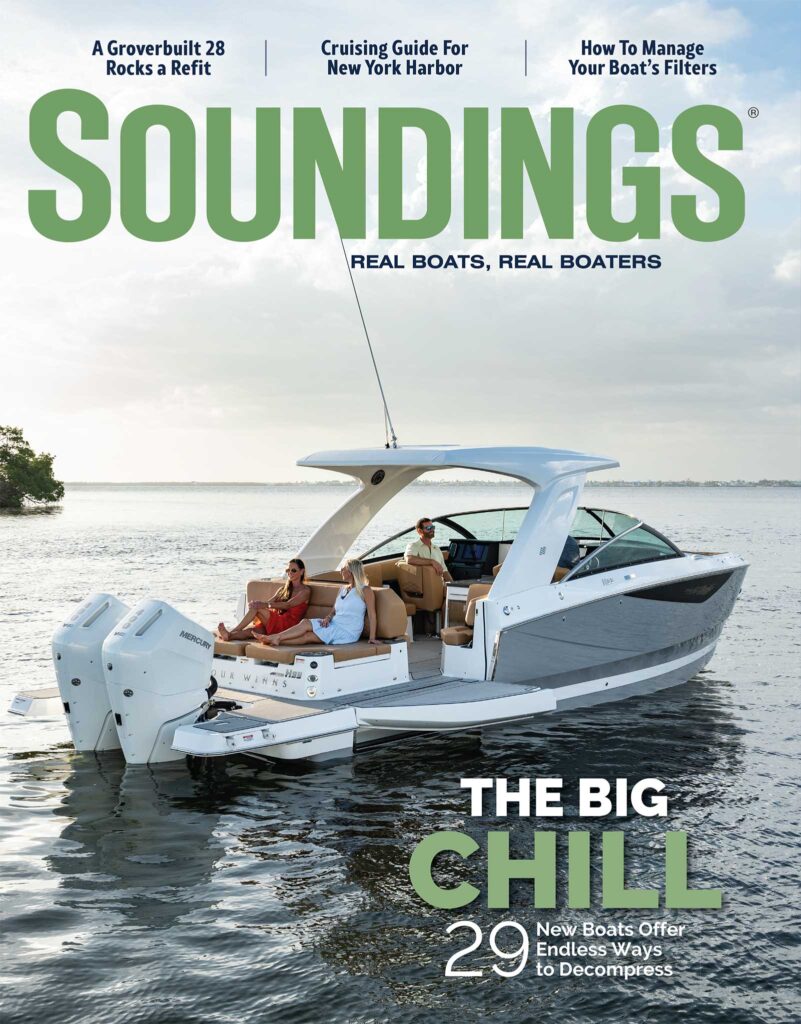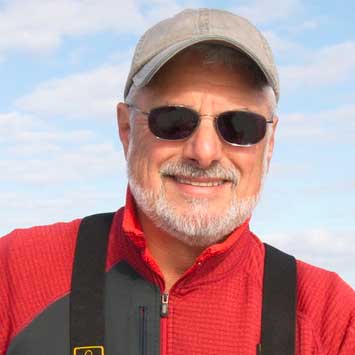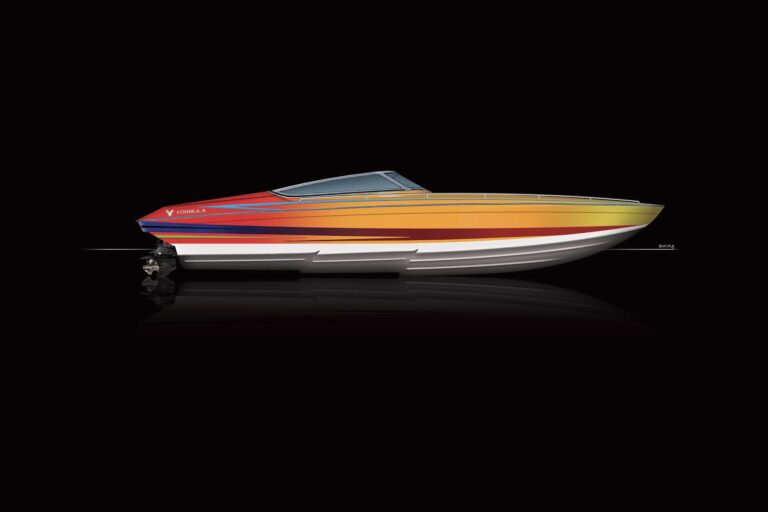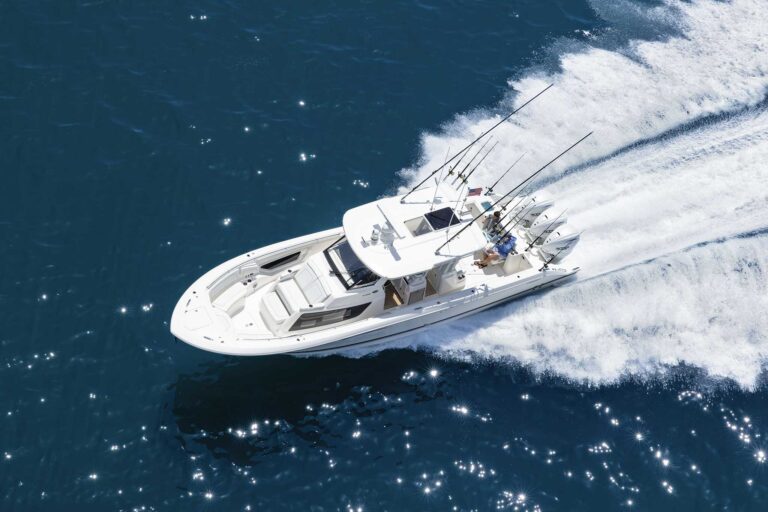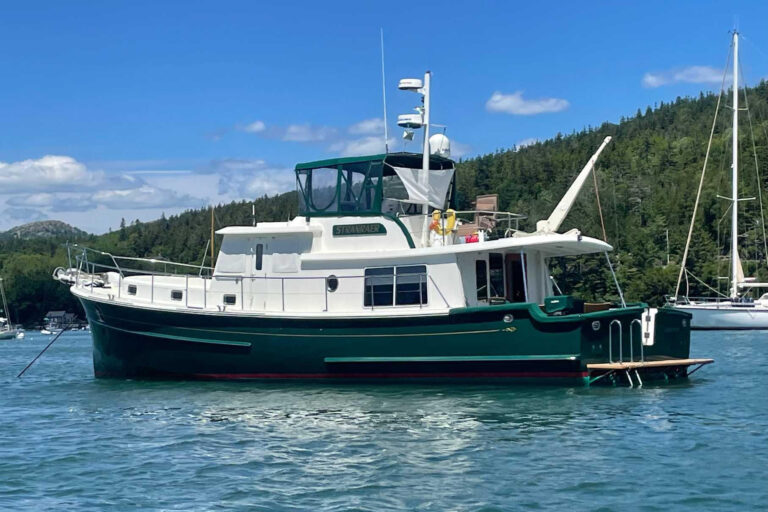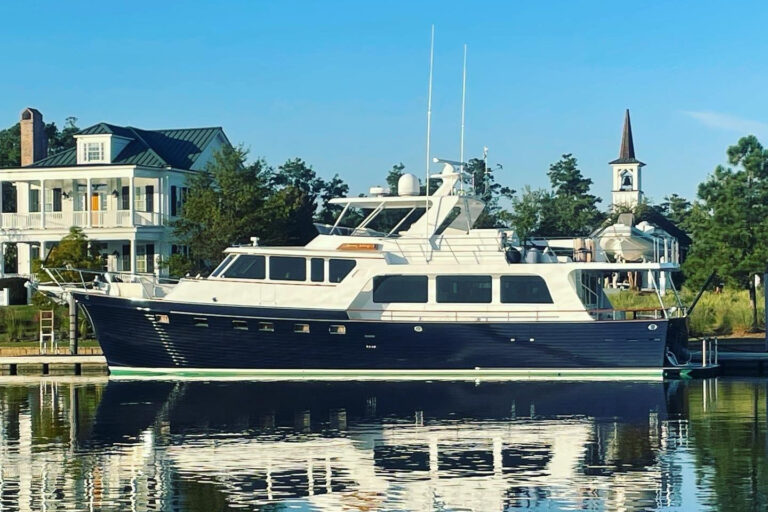The Viking Marine Group has been a big player on the powerboat scene for decades, particularly the luxury sportfishing market. A world leader in semi-custom yachts with 4,000 boats delivered to date, few competitors can match its pace of innovation. And now, with the growth of the company’s line of center consoles, Valhalla Boatworks, some industry watchers continue to contemplate how the New Jersey-based builder reached this level of success.
It wasn’t by accident. The drive to build the business probably began around the dinner table of the company’s cofounder, a strong-willed entrepreneur who raised his son to work harder than he did, and to make the time to find joy in boats. And that son, in turn, raised his children to do the same. As a result, three generations have taken this family-owned company to impressive heights. Here are some of the work and life lessons this clan learned from each other.

WORK ETHIC
Bill Healey bought Peterson/Viking— a struggling builder of wooden boats—in 1964, along with his brother, Bob. The siblings had visions of making cruisers for the growing recreational boat market. Bob, who died in 2021, was an attorney and financial whiz, while Bill was the hands-on boat builder who took the reins of the company as president.
“My father is a marine through and through,” says Bill’s son Pat, who is president and CEO of Viking today. “He is a tough, hard-driving, no-nonsense guy and as old-school as you can get. I learned from an early age that when dealing with him it’s his way or the highway.”
Pat grew up in the 1970s and says he was of a generation that had intentions to change the world. So, as a young man, when he started working alongside his father, they naturally clashed. And frequently. “But one thing he instilled in me was the fear of failure,” says Pat. “It was simply not an option.”

Bill worked six days a week. Sunday was for church and family. After each long day at the production plant, he’d come home, eat dinner and then spend time on the phone with Bob, talking about company business. “Dad drilled his work ethic into me and showed me that you lead by example,” says Pat. “He would say, ‘Pat, our boat builders, dealers and customers are the most important part of our success, and they should all be treated with respect.’ He made sure everyone in the company understood it was their job to help build a better boat every day.”
At the time of the purchase of Petersen/Viking, the company was building wood convertibles and cruisers. After the Healey brothers took over, the business name changed to Viking Yacht Company. In 1971, in a radical departure, they introduced their first fiberglass 33-foot convertible. It was a hit. The 40-C followed in 1972 and remains one of Vikings most popular boats—400 were sold in the following 10 years.

Bill never rested on his laurels. He managed the company as it introduced bigger and faster boats. Bill, who is retired today, is known throughout the industry as a professional who holds his boat builders in high regard. When he was Viking’s president, he’d stand at the factory door at the end of each work day to shake hands and share pleasantries with everyone—designers, boatwrights, engineers, the cleanup crew. That tradition continued, even as employee ranks swelled to over 1,000.
Today, under Pat’s management, that respect for the company’s workforce—now 1,600 people strong—has never wavered. In fact, the factory shuts down for its annual company clambake, a time when employees and their families gather for food and good times.
A FISH STORY
Viking is now renowned as a builder of top-notch sportfishing boats, but Bill was never really an angler. He loved cruising and the beach, but work always came first. When Pat became interested in fishing as a youngster, Bill encouraged him to pursue his passion, although it was Pat’s Uncle Chappy and some of the employees at Viking who took him on his earliest angling adventures.

“I was fishing like crazy in high school and even worked as a mate on local headboats the year I graduated,” Pat says. “I fished for everything—stripers, weakfish, flounder, tog—and then I got invited to fish offshore. That’s where I got bit by the bluewater bug. You only have to catch one white marlin and you’re hooked.”
Pat’s love of bluewater fishing had a major influence on the direction of the company and the boats it built. Over time, he encouraged Bill to expand the “demo program” that saw Viking field one or two new sportfishing models at annual tournaments that took place along the East Coast, from the Mid-Atlantic to Florida. And it was Pat who was behind what some call one of the most transitional sportfishing boats in history, the Viking 55-C, which debuted in 1997. It was built to be a tournament champion, as it was sleek, fast and equipped with everything a professional crew could need. And the living areas set a higher standard in layout and comfort.
 Gary Caputi
Gary CaputiTALE OF TWO BOATS
Pat started working on the floor at Viking sweeping floors when he was 13. When he was 15 he started badgering his father for a boat of his own. Money was tight, but Bill found him a junker 16-foot Thunderbird runabout.
“It was really just the skin of a boat,” Pat says. “The windshield was gone and the seats, too. It was just a fiberglass shell with bad steering and frayed wiring, but I put it in the garage at our house, stripped it down and started sanding. Every spare minute I could find between school, sports and working at Viking I was in the garage. I painted it myself—blue and white. One of the guys at Viking found me an outboard with low hours on it and soon I was fishing out of my own boat.”
Pat says it was a learning experience that gave him confidence in his abilities and pride in the accomplishment. Decades later, he would pass that experience down to his own children.
 Gary Caputi
Gary Caputi“My wife Leanne and I had just purchased our first house on the water. My son Sean was 14 and his brother Justin was 13,” says Pat. “I told them they were going to get their own boat. I found a battered 13-foot Whaler in need of a lot of work. I went to the nearest Sears store and bought them each a Craftsman toolkit. I put the boat in a garage at Viking and over the coming days we stripped it down and I set them to work sanding.”
Today, Sean and Justin—who work in sales at the company—vividly remember the experience and what it taught them. “It wasn’t like dad came home with a new boat for us,” says Justin, 29. “It was an old Whaler. First we removed everything—the rails, the console, seats, steering and controls—and then spent a lot of time sanding and prepping it to be painted. It was Dad’s way of showing us what could be done with fiberglass.”
When the boat was finished it was a show piece, with a new teak console and seats, aluminum rails, a sharp boot stripe and a custom Boston Whaler logo that incorporated the boat’s name,
Double Trouble.
As Sean and Justin got older they began to share their father’s passion for tournament fishing, so Pat got them a Contender bay boat. The little Whaler was passed down to their sister Kaitlyn, who was old enough to start boating on her own. Its name was changed to Sweet Thing and it resided in a slip next to Pat’s center console, Wild Thing.
“The Whaler is in the showroom at Valhalla Boat Sales now,” says Kaitlyn, 23, who works in marketing and social media. “I learned a lot about boating in it and still love it. Friends told dad he should tuck it away for when he has grandchildren. No pressure there.”
SCHOOL, SPORTS AND BUSINESS
Pat was very involved in sports through high school, but his father was always too busy to come to his games. When he graduated he just wasn’t ready for college, so he took three years off to surf, work at Viking, and travel the tournament circuit. “Then I enrolled at Rutgers Camden,” says Pat. “When my father and uncle got wind of what I had done, it didn’t sit well with them. Uncle Bob called me into his office one day and flipped a stack of papers to me. It was an application to St. Joseph’s University in Philadelphia. I was stunned. I told him I was already enrolled at Rutgers, and he said, ‘You’re not going. Your application has been accepted at St. Joes.’ That was it. I went to St. Joe’s, which happens to be a top-notch business school, and studied accounting because my father and uncle felt it would serve me best as I worked my way up in the company.”
Like their father, Sean, Justin and Kaitlyn also competed in sports in high school. They too attended college taking courses that would benefit their growth in the family business. All three knew from an early age that they wanted to work at Viking.
“Sean and Justin were into baseball in a big way,” Pat recalls. “Justin went on to play at a high level in college, team captain. Sean was more physical, like his grandfather who was a boxer, and moved to lacrosse, where he excelled. In our yard in New Jersey, I would throw buckets of balls to them until it got dark. One boy would hit, the other would shag the balls in the field. I have two toes that are splintered up from getting hit by line drives. Those were great times.”
Yet for all their athletic talents, Pat’s boys say they were clear on their career paths from a young age. “I never doubted that I would be working at Viking one day,” Justin says.
As a young man, Sean had liked surfing, fishing and the beach. But when he had to get serious about a career, his interests led him to Viking. “I started working on the make-ready dock in my teens, where I carried around a bucket, rags and a bottle of Spray Nine to clean up fiberglass dust, look for stray screws and make sure each boat was spotless prior to delivery. I’m 30 now and to see where I have progressed in the business makes me so happy.”
Kaitlyn was equally enthusiastic about making a place for herself at the company. “From a young age I’ve wanted to make an impact on the business. Our mom, Leanne, was a super-mom who raised us when dad was away on business. But I think he did a good job guiding our education and putting us in positions in the company where we could thrive.”
“Kaitlyn is a social media marketing guru,” Pat says. “We’ll be celebrating our 200,000th follower on Instagram for Viking and we have nearly 65,000 for Valhalla and both continue to grow.”
Pat’s children have formal roles in sales and marketing, but they do a lot of other things. They take VIPs on tours of the manufacturing facilities, just like grandpa Bill did years ago. They man the displays at boat shows and fish as members of the demo tournament teams. Sean and Justin were involved in the development of the Valhalla boats.
THE COURSE AHEAD
Since 1986, Viking has introduced 45 new models and sold thousands of boats. More recently, the builder made big strides with Valhalla Boatworks. “In just three years we debuted five center consoles and will have completed our 400th Valhalla by the time this story appears in print,” Pat says. In addition, Viking has introduced two new flagship models in 2023: the Viking 90 and the Valhalla 55, which won the NMMA Innovation Award.
Achieving those goals isn’t always easy. “There’s a lot of hard work behind the scenes” says Justin. “My dad pushes everyone in the company. Sean and I were involved in the planning meetings for both boats and the production schedules he set seemed impossible, but the Viking team rose to the occasion.”
The computer modeling and testing alone for the 90 took thousands of hours. The efforts produced strong results. “We’ve had orders for 16 of the 90s since its introduction,” says Justin.
If you spend enough time with Sean, Justin and Kaitlyn, you start to wonder how their father will feel when it comes time to step back and take a senior statesman’s roll at Viking. Does the current CEO think the company will be in good hands with the next generation?”
“One hundred percent,” says Pat. “They’ve grown up around the greatest team of people in the industry, and they’re paying their dues and taking their lumps now. They are savvy in the modern ways of doing business, and old school in the way they interact with company personnel and customers. All that will help them navigate a faster moving business environment going forward.”
This article was originally published in the June 2023 issue.

